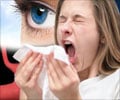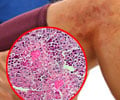Professor Ashley Woodcock and his team from the University of Manchester have found 16 types of potentially harmful fungi in the pillows they analyzed.
Professor Ashley Woodcock and his team from the University of Manchester have found 16 types of potentially harmful fungi in the pillows they analyzed. These fungi act as a trigger for an asthma attack. The results of the research are reported in the Journal Allergy. Researchers collected samples from 5 synthetic and 5 feather pillows and compared their fungal load. Researchers found that all the 10 pillows studied had a fungal load, the fungal species ranged from four to 16 different in each pillow. The diversity of fungal species was more in synthetic pillows compared to feather pillows. Researchers found a diverse species of fungus in the pillows, which ranged from bread and vine moulds and also fungus which habitats damp walls were also present.
Asthma:Asthma occurs due to a hyper responsive reaction to a stimuli or trigger leading to narrowing or blocking of the lung airways. An asthma attack leads to lung infection, tiredness and cough and it is not surprising that asthma is a leading medical cause of absenteeism of children from school and adults from work. An attack of asthma leads to breathing difficulties and the attack can be acute when it lasts for a short period or chronic when it lasts for days. The attack can also be mild or severe and a life threatening one. The obstruction in the lung airways can be cleared spontaneously or by anti-asthmatic drugs.
Aspergillus fumigatus:
The fungus Aspergillus fumigatus was the most common encountered fungus in the synthetic pillow. More than 100,000 fungal species are present in the environment and these fungus spread by air as spores and reaches the respiratory tract of humans and animals through inhalation. Aspergillus fumigatus is the most frequently encountered pathogen/allergen among the more than 100 known species of Aspergillus. Inhalation of A. fumigatus spores leads to colonization of the fungus in the bronchi of the lungs leading to asthmatic reactions, which causes an increase in Eosinophils and mast cell degranulation. This increase in IgE leads to an increase in inflammatory mediators leading to an asthma attack.
Experts view:
Professor Ashley Woodcock said, "Since people spend a third of their life sleeping and breathing close to a potentially large and varied source of fungi, these findings certainly have important implications for patients with respiratory disease - especially asthma and sinusitis."
A spokesperson for the charity Asthma UK said: "We are aware that patients at the severe end of the spectrum of asthma are more likely to be hypersensitive to fungi than others with asthma and if you think that fungi could be a trigger for you, you should consult your doctor and try to avoid the trigger by cleaning the bed and disinfections of your pillow”.











